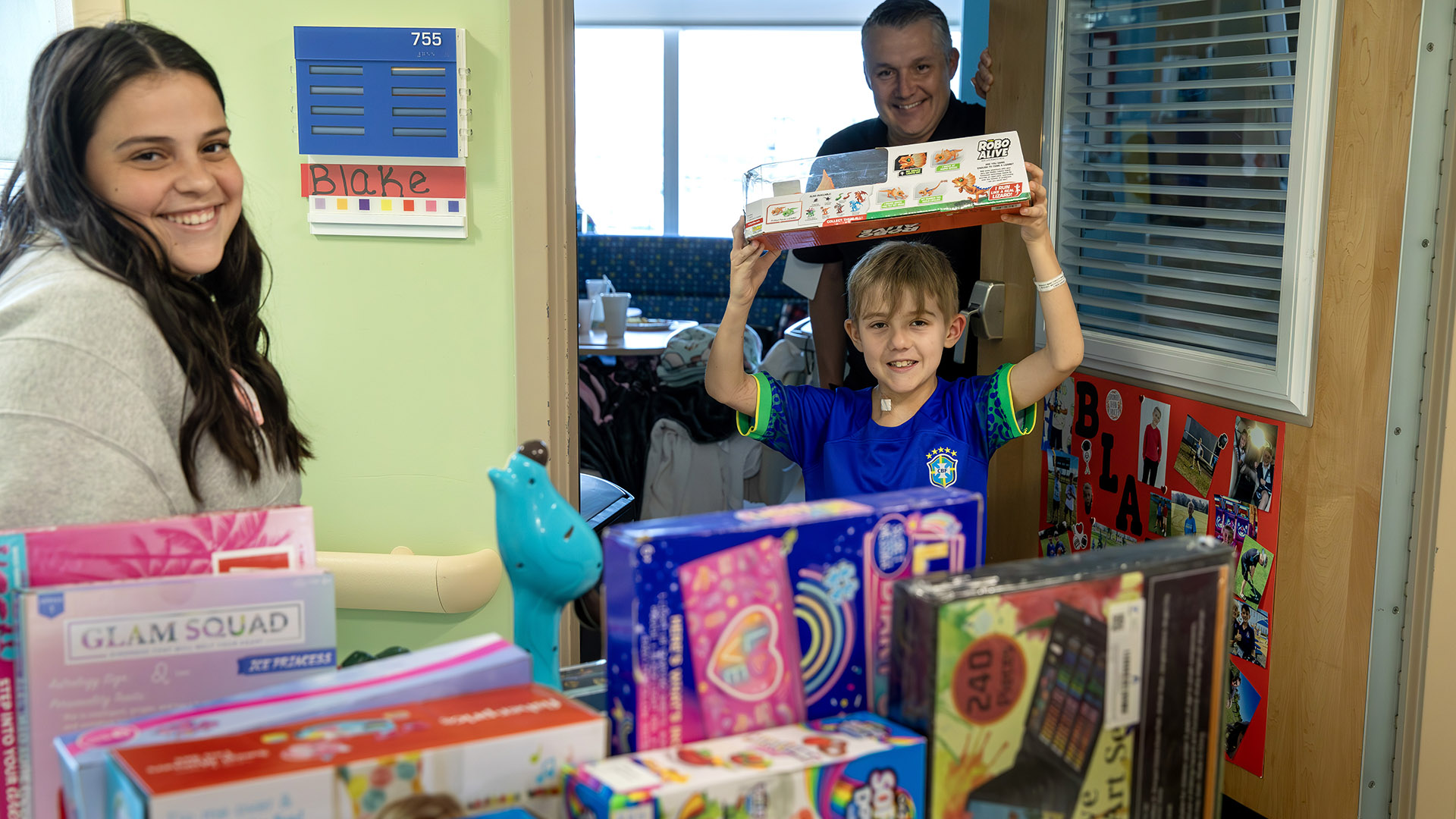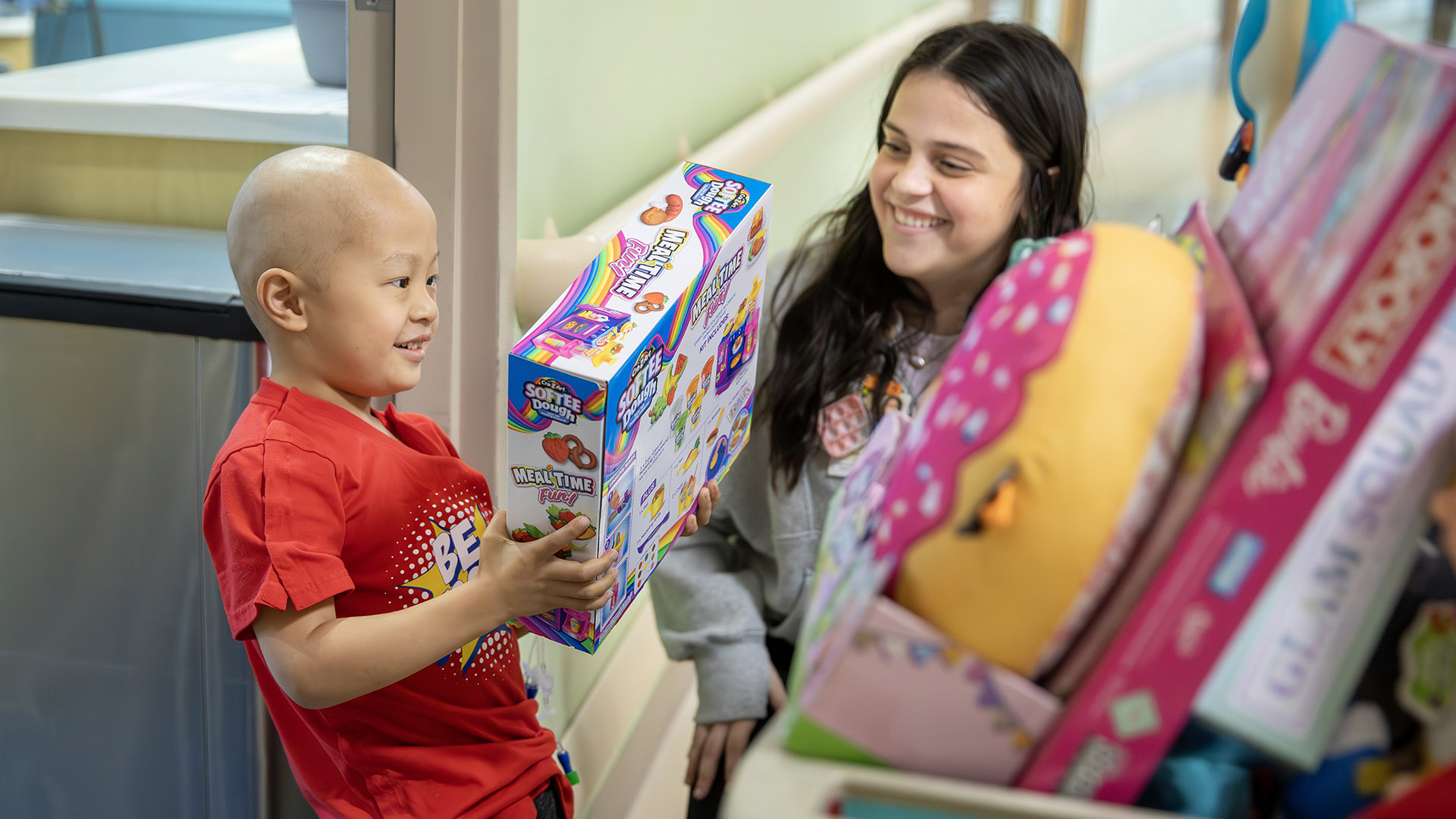Bingo a Big Win for Pediatric Patients

Every Wednesday at 3 p.m. at Johns Hopkins All Children’s Hospital in St. Petersburg, Florida, something a little bit magical happens.
Young patients throughout the hospital cast aside their worries and pick up their playing cards.
It is officially bingo time!
In room after room, the closed-circuit TVs flicker on in anticipation of the game ahead.
Child Life activity tech Ally Coraggio begins the weekly broadcast from the activity center.
“Hello, everybody! Happy Bingo Wednesday!”

Patients who are well enough are invited to play in person. Family members can join in too.
10-year-old Philo has come down from his hospital room and has settled in for the game — his IV pole a constant companion.
Most Wednesdays, the traditional cards are used — with five columns of five squares each — the columns labeled B-I-N-G-O — of course. There is a number in each square, except for that helpful “free space” in the very center. The first player to complete a full row of numbers, horizontally, vertically or diagonally, is the winner.
But the Child Life team does like to mix it up a little bit, often celebrating seasons and holidays with themed cards.
On this day, the numbered cards are replaced with cards invoking a St. Patrick’s Day motif. Coraggio shuffles the array of Irish-themed pictures on a small table and then holds them up and calls them out, one by one. There are shamrocks, rainbows, pots of gold, leprechauns and dancing ladies.
The luck of the Irish would be useful here.
“Bingo!”
Philo scores an early win. His day is looking up.
There are more games and more winners to come — with some pretty awesome toys as prizes.
Corragio continues calling the game, and soon the speaker phone next to her rings loudly.
It’s the bingo hotline.
“Bingo line! Do we have a winner?”
Yes, indeed. 8-year-old Blake confirms his win from his room on the seventh floor. He is already anticipating what fabulous toy he has won.
"Wednesday afternoons are very important here,” says Jennifer Mayer, M.D., a hematology-oncology specialist who treats children who may spend weeks or months in the hospital. “It is such a favorite activity for our kids.”

There’s no clear date as to when the bingo tradition started at All Children’s, but Child Life specialists believe it goes back decades.
“Here, playing bingo is not just playing bingo,” says Dara Jackson, CCLS. Jackson is a Certified Child Life Specialist and supervisor. She has seen the classic game work on patients and families in a powerfully positive way.
“It’s helpful if kids have a time they can look forward to, where they are not focused on their illness, and they can just be kids and do what kids do,” Jackson says. “It’s actually healing for the whole family.”
Bingo is a classic that endures beyond hospital walls. Popularized by a toy salesman in the late 1920s, bingo is still played in church fellowship halls, at summer camps, in recreation centers and now in endless varieties online.
In a children’s hospital, it’s not only a fun distraction, but it helps kids who might otherwise feel isolated in their rooms to feel connected to others.
“I’ve had kids who were ready to be discharged who didn’t want to leave until they got to play bingo,” Jackson says. “Even some of our therapists choose not to schedule a therapy at 3 p.m. on a Wednesday if the child they’re treating loves the game and wants to play.”
Several games and many happy winners later, the impressive prize cart, packed with good toys, begins to make the rounds.
Philo chooses an Avengers figurine.
When the prize cart visits Blake’s room, he is torn.
“I’m trying to decide between that stuffed animal and the robot-lizard,” Blake says.
After some pondering, Blake goes with the lizard.
A solid choice.
He is looking forward to the next game.
Child Life at Johns Hopkins All Children's Hospital
Our Child life specialists use developmental, educational and therapeutic interventions and play to help patients and their families cope with illness, injury, treatment and hospitalization. Our team works closely with families and health care staff to support each child’s physical and emotional needs during their medical experience.
